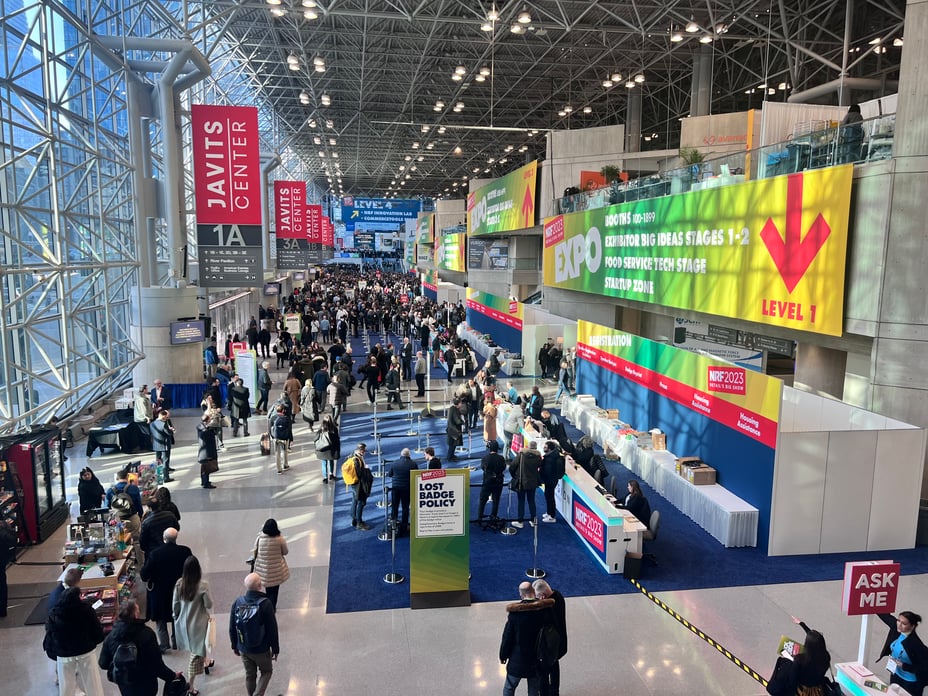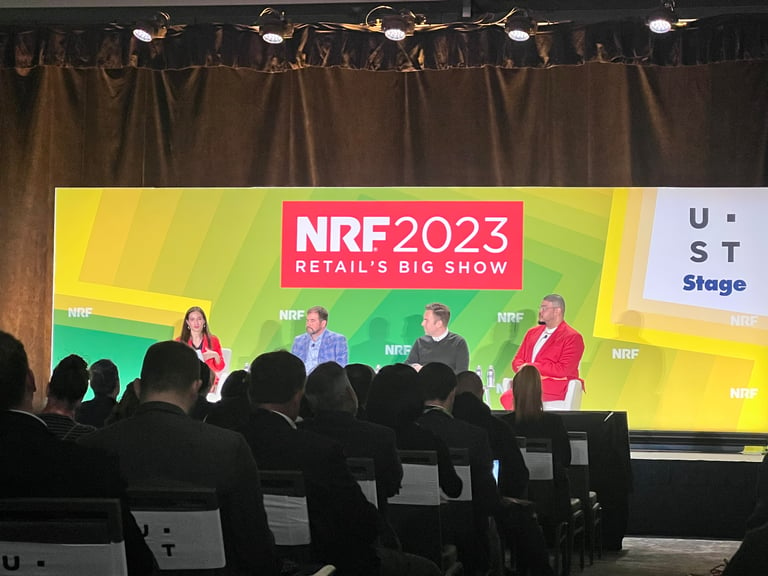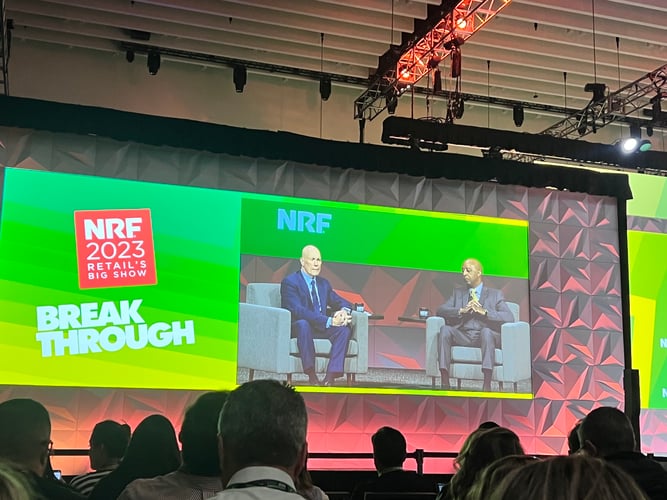Three Big Questions at NRF: Recovery, Optionality, and ESG

Optimism flowed through National Retail Federations’ Big Show, propelled by 40,000 attendees, nearly 1,000 vendors, and hundreds of speakers from around the globe.
As SGS Maine Pointe’s representative, I heard optimism over and over as attendees and speakers spoke about three big questions about recovery, optionality, and ESG:
We’re primed to recover from the last three years. Where do we start?
We’re ready to diversify suppliers. How do we embark on optionality?
We’re dedicated to sustainability. How can we make it cost effective?
The impending recession... or so we thought.
I thought for sure I would hear more about the impending recession and the negative impacts of consumer slowdown. However, most retail executives felt that “if” we were officially in a recession or nearing one, it would be short and recovery would be fairly quick. The CEO of Saks Off Fifth, Paige Thomas, talked about how they can tell that consumers are feeling pressures because they are seeing it with higher credit card balances and delinquencies on payments, but it doesn’t appear to be slowing down spending.
I also heard executives talking about not worrying so much about recession as overall recovery from the pressures of the past few years including supply chain volatility, labor shortages, war, pandemic, inflation, growing demands of consumers, and legislations to enforce sustainability initiatives. Many felt inflation was already coming down in the U.S., so worried less about the recession fear and more about the long-term impacts of all the other challenges they have been faced with.
The last takeaway was really the overall sentiment of retail going into the next year. Retail leaders do not seem pessimistic about the outlook of the economy and their business but are being more conservative in their approach. They are scrutinizing forecasts, strategizing supply and demand planning, and increasing their open-to-buy reserves in order to remain flexible and agile during times of uncertainty.

Optionality with suppliers is a reoccurring theme
Supply chain optionality included focusing on private label brands and diversifying outside of China. Many saw the impacts of China’s “zero tolerance” policy last year: if even one person at a factory got COVID, the Chinese government would shut the entire facility down. This disruption caused major issues for the rest of the world and, as a result, emphasized the need to explore suppliers in other countries.
However, optionality is not an easy path. New suppliers have to be vetted and must be able to provide the appropriate infrastructure, quality, costs, and delivery standards to meet the needs of the retailers. Lowe’s CEO, Marvin Ellison, talked about how they currently source from over 35 countries and they are looking at other countries as well, but it takes time to make that shift happen. Gaining optionality can be a long process that companies like SGS Maine Pointe help companies solve every day.
Another theme within the supply chain was around removing friction points along the consumer journey. Retailers are constantly trying to appease consumer expectations on pricing, availability, shopping preferences (in person, online, curbside, etc.), and speed. The more seamless this experience is, the better the retention rates of their consumers. This effort requires investments in technology, process, and labor to optimize a frictionless shopping experience.
Lastly, a shortened buying cycle is key. According to Paige Thomas of Saks Off Fifth, the off price market has the advantage of having very short buying cycles, being able to watch trends and shifts in consumer preferences, and react very quickly to get product on the shelves within the next 4-6 weeks. Other retailers do not have this luxury. They have to plan store sets much farther in advance and hope the product is still relevant. Working closer with suppliers and condensing that cycle time is critical to being more responsive to the quickly changing demands of consumers.

The U.S. is pretty far behind the rest of the world when it comes to sustainability
Jeff Gennette, CEO of Macy’s, talked about how customers say they want more sustainable products, but are still not willing to pay for it. So retailers are challenged to find a balance between investing in sustainable products and identifying opportunities to capture efficiencies and cost savings. They could find those opportunities by working with more sustainable suppliers or by examining other areas of the business, in order to fund sustainability initiatives.
These challenging times of continued consumer pressures from multiple angles make it hard for consumers to spend more money on ESG, an area they see as merely “nice to have.” U.S. companies need to decide where they stand and how they will implement sustainability initiatives going forward. Jason Buechel, CEO of Whole Foods, talked a lot about building stronger partnerships with suppliers to create a win-win combination and tackle these initiatives together.
We are emerging from some of the worst supply chain volatility that many professionals have ever experienced, and the retail leaders at NRF are optimistic but cautious on the road and path forward.

